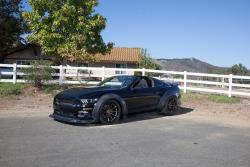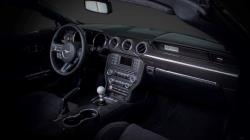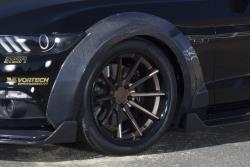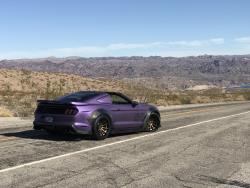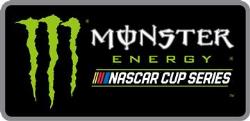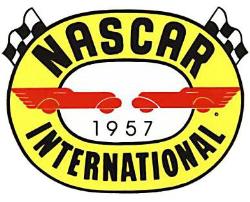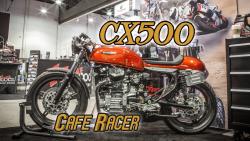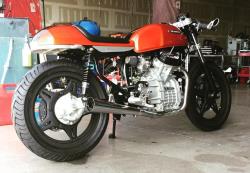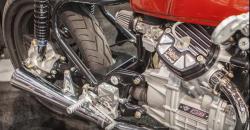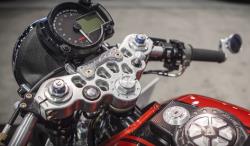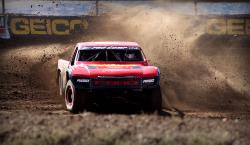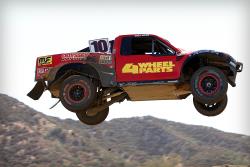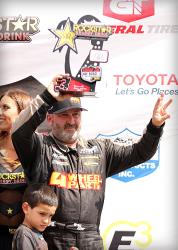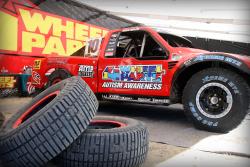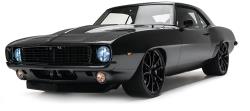
While Mike Cavanah’s 1969 Camaro looks subtle, its performance is anything but |
When Mike Cavanah started out to build his ultimate Pro Touring car, he bought a 1969 Camaro off of eBay as a starting point. While a huge fan of the Camaro and the '69 sheet metal in particular, Mike felt that perhaps there were enough Pro Touring ’69 Camaros already in existence and changed his plans. Instead he built his now famous 1966 Chevelle Grand Sport.
Fast toward a few years. Construction of the Chevelle was completed and Mike was enjoying driving it around the Santa Monica Mountains as well as at track days and autocross events. And then another 1969 Camaro sort of dropped into his lap. The car was stunning, the price was right, and it needed virtually nothing, and since he wasn’t faced with a three-year build as there was to get the Chevelle on the road, he bought it.
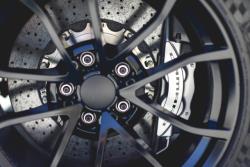
15.5-inch Brembo calipers fitted with ceramic rotors and pads are on each corner of this 1969 Camaro |
Before we get into specifics, the car has a history about as unique as you’ll find. It was purchased by Major League pitcher Brad Penny, then playing for the Dodgers, with the intent to have it rebuilt and modified. He took it to the shop of late Boyd Coddington where it was stripped to a bare shell and all rust and damage repaired. After the master builder passed away Penny moved the project to Timeless Kustoms, where it was completed in 2013. Distracted by his career, Penny sold the car to another party who then brought the car back to Timeless Kustoms. In turn Timeless Kustoms, knowing his fondness for 1969 Camaros, contacted Mike.
Beyond the 1969 body, Mike was attracted to the car because of the high level of workmanship and attention to detail of Timeless Kustoms and the fact the car was ready to drive as it sat. Mike ordered a few changes to suit his personal preferences and soon he was out running the canyons near his home.
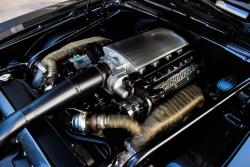
The twin-turbo 380 CID Chevrolet LSX small block is tuned to produce in excess of 750 horsepower |
Back to the build: Timeless Kustoms cut out the floor of the Camaro’s OEM firewall-back unibody and replaced it with a body on frame configuration with a custom fabricated floor pan. The Camaro shell now sits on an Art Morrison 2×4 Max G chassis, which features C6 Corvette independent front suspension and a four-link solid axle rear suspension. To improve rigidity, a 10-point roll cage was fabricated and installed in a manner as to not draw too much attention to itself. Out on the corners are Corvette Z06 wheels bolted to 15.5-inch Brembo carbon ceramic brakes all around.
Under the hood sits a Chevy LSX small block assembled by Timeless Kustoms, which is fed by twin turbos. The LSX block measures 380 CID with a 4.125-inch bore and 3.620-inch stroke with a rational 9.0:1 compression ratio. A camshaft was custom-ground to match the characteristics of the turbo LSX. Atop the block are a set of CNC machined LS7 cylinder heads. Air is drawn in through a K&N 69-series air intake system, utilizing the MAF sensor connector to tie into the GM engine harness and E-67 computer.
Past the filter, two Precision Turbo water-cooled turbochargers upgraded to ball bearings squeeze the incoming air and then move it through a Spearco intercooler to get rid of as much heat as possible. The pressurized air meets fuel in the cylinders drawn from the custom fabricated fuel cell by a Fuelab boost referenced in-tank 1200 HP fuel pump system.
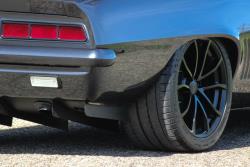
Check out the custom under diffuser and rear wing designed to keep the car planted at speed |
Taking all the abuse is a Tremec wide ratio six-speed transmission from American Powertrain. Between the engine and the gearbox is a Centerforce twin disc clutch set-up. An aluminum driveshaft transfers all that grunt back to a Ford 9-inch third member, carrying a Detroit Tru-Trac limited slip differential fitted with a 3.50:1 ring and pinion.
Enough about what’s under the body shell. Let’s talk about the exterior, because if the mechanicals are fascinating the exterior is stunning. As is common practice these days, the bumpers were tucked tight to the body. Further, the drip rails were shaved for both esthetics and aerodynamics. A custom rear wing was fabricated by Timeless Kustoms as well as the undercar diffuser, to help keep the car planted at speed. To help pull heat through the intercoolers, a set of subtle air extractors were fitted in the hood. Detroit Speed powered headlamp doors are fitted to the grille, much like the option on some first generation Camaros. If you can’t name the paint color, don’t worry as it’s not in your typical hot rodders’ repertoire. It’s actually based on BMW’s luscious Sparkling Graphite.
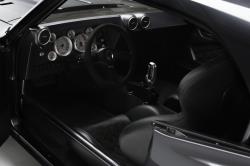
The cockpit is set up for serious driving with supportive seats and an array of analog gauges |
Of course the interior is up to the standards as set by the mechanicals and the exterior. One of the first things you notice is the Marquez design dash packed full of fully analog Auto Meter gauges, tracking virtually every function on the car. The seats were custom built, and designed for fast road or track day use. The interior upholstery is by Eric Thorson, along with a one piece suede headliner and Accu-Mat sound deadening. It does get a little warm from time to time where Mike lives, so a Vintage Air air conditioning system was installed.
As impressive as the list of components and modifications are, they’re little substitute for the impact the car makes in person on your eyes and your ears. For the time being, you’ll have to catch Mike driving the canyons to spot the car as he’s decided that he prefers to bring his Chevelle Grand Sport to shows and competitions. But with a fantastic as this Camaro, you never know – he may change his mind. |

